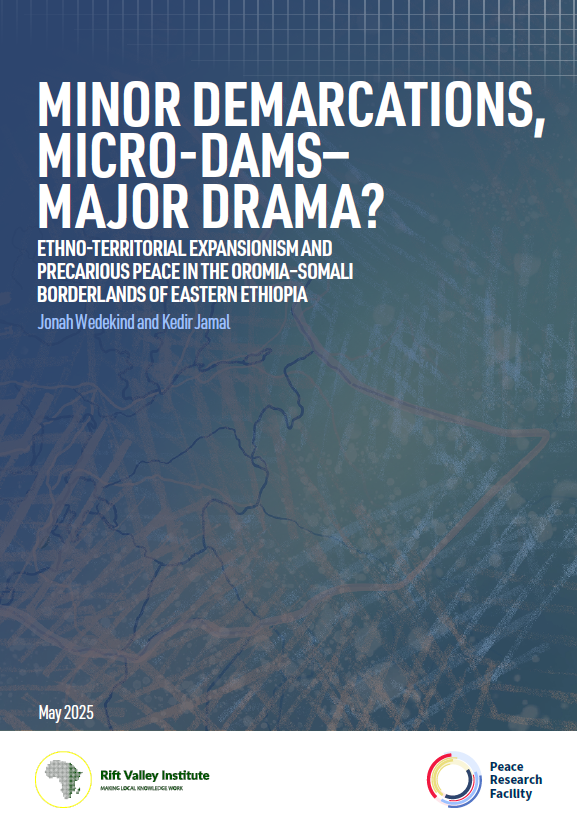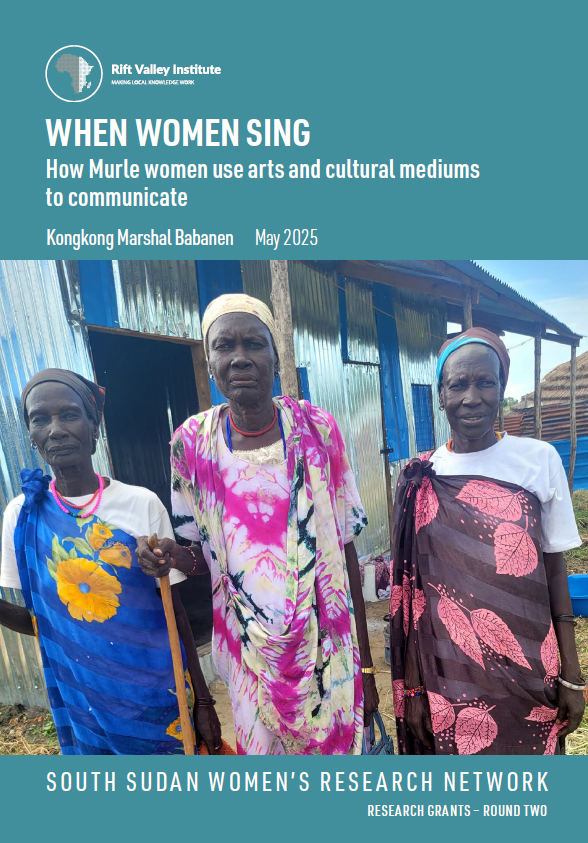This blog is part of a series that showcases the rich diversity of information held in the South Sudan National Archives (SSNA). RVI works in partnership with the Ministry of Culture, Museums and National Heritage on the preservation and digitization of the archives. Under the current project, funded by the Government of Norway, through UNESCO, various activities are underway to showcase the information available in the archives to a wider audience. Zoe Cormack is an anthropologist and a historian who has done extensive research in the SSNA.

In many countries around the world, the suppression of infectious disease has dominated life in 2020. Living through the COVID-19 pandemic, it has been impossible to ignore the fact that diseases, and human efforts to control them, are deeply shaped by social and political factors, as much as they are by biological ones. Several documents in the veterinary files in the South Sudan National Archive shed light on the complexities of controlling epidemic animal diseases on (South) Sudan’s borders in the mid-twentieth century.
The records on animal health care in the South Sudan National Archive begin in the mid-1940s. Although the Sudan Veterinary Service was founded in the same year as the Anglo-Egyptian Government of Sudan (in 1898), it largely ignored the southern regions of the country until after the Second World War. At this time, there was increasing concern about human welfare and growing appreciation of the economic value of southern livestock and, simultaneously, a realization that rates of disease were rising in southern herds.1
The two diseases that occupied the veterinary service most during colonial rule were rinderpest (one of the great animal diseases in the nineteenth and twentieth centuries) and bovine trypanosomiasis (spread through tsetse flies and related to sleeping sickness in humans). Both diseases were complex to control because they had reservoirs of infection in wild animal populations, which could periodically or seasonally re-infect livestock. Yet, both were seen as critically important to manage because they could have catastrophic impacts on cattle, which were central to economic and social life in many parts of southern Sudan.
Initial attempts to control rinderpest and trypanosomiasis in Sudan had focused on vaccines. But there were problems with the efficacy and storage of available vaccines, so disease management shifted to the control of wildlife and social interventions.2 This often involved radical and coercive measures. One revealing example from the archive concerns the attempts to control animal diseases along the border with Sudan and Uganda.
In August 1949, the Sudan Veterinary Service received news that buffalo from Uganda were ‘invading’ the Kajo-Keji area. It became apparent that this movement was caused by an attempt in Uganda to create a ‘rinderpest boundary’ along the border with Sudan. A twenty-mile deep ‘cordon sanitaire’ just south of the border, along its entire length, was being cleared of wildlife. The method was crude: animals were shot and driven into Sudan. The Ugandan authorities hoped this would prevent rinderpest-infected animals coming from Sudan infecting Ugandan herds. However, the Sudanese authorities were worried that the movement of buffalo would spread tsetse fly northwards and infect Sudanese herds with trypanosomiasis, as well as causing crop damage and endangering human populations near the border.3
These fears were not groundless. A few years earlier, there had been a serious outbreak of trypanosomiasis among Didinga and Lango cattle, which had resulted in a loss of two thirds of the stock. The colonial government attributed this outbreak to the movement of elephants and buffalo carrying tsetse fly up the Kidepo valley, although it was likely also due to changing patterns of human settlement in the region. They now feared the cattle herds around Kajo-Keji would become infected and, potentially more catastrophically, that a northerly spread of tsetse fly could infect the larger Dinka herds.4
To diffuse tensions, a cross-border veterinary and game control conference was held at Nimule on 8 September 1949. Negotiations were complicated because the precise location of the border was not agreed between Sudan and Uganda, but the discussions did lead to greater understanding of the Ugandan disease management plans. The first stage had involved depopulating a twenty-mile zone west of the Nile of buffalo, which had resulted in the ‘influx’ of buffalo to Kajo-Keji. The second stage would continue buffalo clearance on the east bank of the Nile. The Sudan veterinary and game departments thought the eastern bank of the Nile would face a similar scenario of buffalo invasion.
Faced with this situation, the Sudan government took what they saw as a ‘pragmatic approach’. They would cooperate with the Ugandan counterparts ‘whether in agreement or not’ but only if they were given warning of when Ugandan operations on the border would take place. They reasoned, if the Ugandan authorities were driving out buffalo, the Sudanese authorities would simply meet this movement of unfortunate animals with a comparable force of armed game officers, who would prevent the buffalo moving into Sudan.5
The file also hints at how the control of movement and surveillance of internal borders in southern Sudan was a key part of colonial animal disease management strategy. For example, when rinderpest was detected in Aweil in 1947, the whole district was declared ‘infected’, and cattle and merchants were prevented from leaving.6 Although in other instances, government authorities were more reticent about the ability to effectively control the movement of cattle—especially when it came to marriage arrangements—admitting that they could not stop people moving animals between different areas.7
Ultimately, militarized and coercive measures, such as clearing large areas of the border of buffalo or preventing the movement of people and animals, were not effective. Severe outbreaks of both trypanosomiasis and rinderpest were still being reported along the border with Sudan and Uganda (and into the Congo) a decade later.8 Rinderpest and trypanosomiasis control is a clear example of how the colonial state lacked the ability to fully enforce its own draconian prohibitions: they could not stop wild animals crossing the length of the Sudan-Uganda border and they could not stop herding communities from moving with cattle. A lesson for controlling epidemic diseases today is that coercive top-down approaches are unlikely to be effective. Indeed, when rinderpest was finally eradicated in South Sudan in the early twenty-first century, it was done with a reliable vaccine, through a network of community-based animal health care workers, and with significant buy-in from pastoralist communities.9
Notes
1. K. Hødnebø, Cattle and Flies: A Study of Cattle Keeping in the Equatoria Province, the Southern Sudan, 1850-1950, MA dissertation, University of Bergen (1981), 120-1.
2. Hødnebø, Cattle and Flies, 123.
3. Letter from Veterinary Inspector Khartoum to Veterinary Inspector Torit. 14 August 1949. EP/737/608; Uganda Buffalo Control, 24 August 1949. EP/737/612.
4. Letter from Veterinary Inspector Khartoum to Veterinary Inspector Torit. 14 August 1949. EP/737/608. Hødnebø, Cattle and Flies, 102.
5. Minutes of a Conference held at Nimule, 8 September 1949. EP/737/613-614.
6. Restriction of Movement of Cattle 20 June 1947. EP/737/548.
7. Misc. extract on ‘Aliab Dinka’ EP/737/556.
8. Telegram from Assistant Province veterinary officer, Equatoria Province to District Commissioner Yei River District 27 May 1959. EP/737/660.
9. Bryony Jones, Aluma Araba Ameri, Nimaya Kenyi Mogga and Samuel Piwa Letereuwa, Rinderpest Eradication in Southern Sudan: the final stages from 2001 to 2007 (2010). https://www.researchgate.net/publication/289538827_Rinderpest_eradication_in_Southern_Sudan_the_final_stages_from_2001_to_2007.


